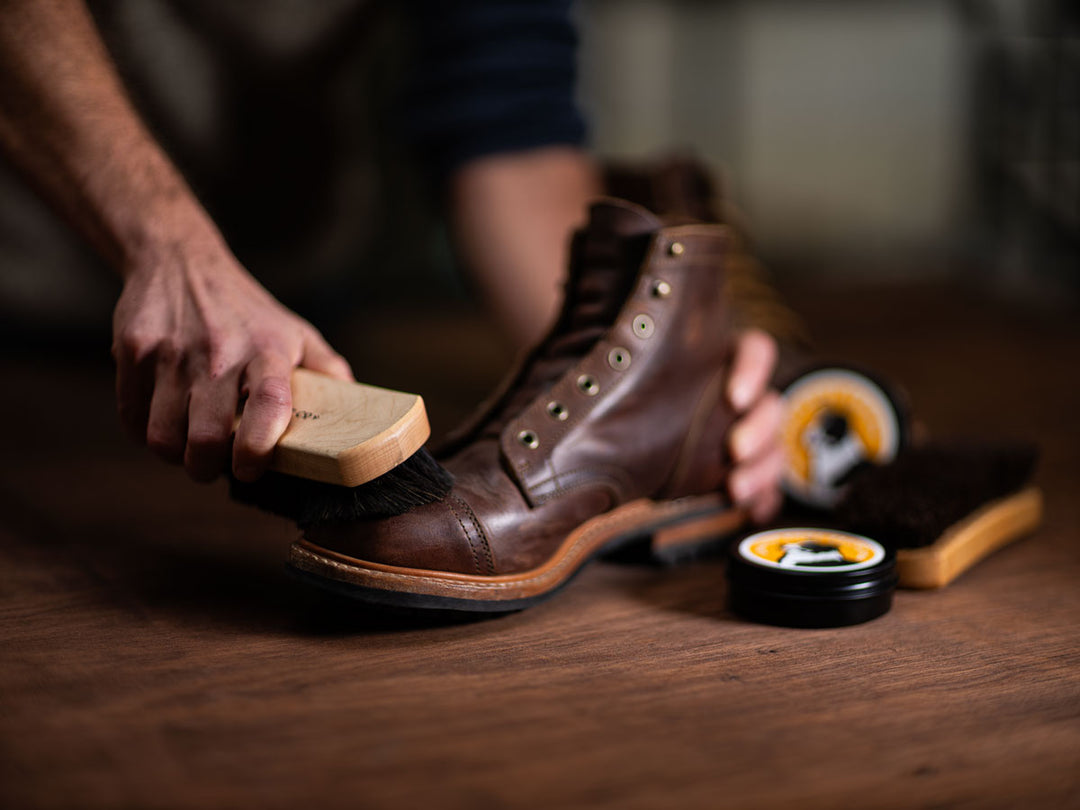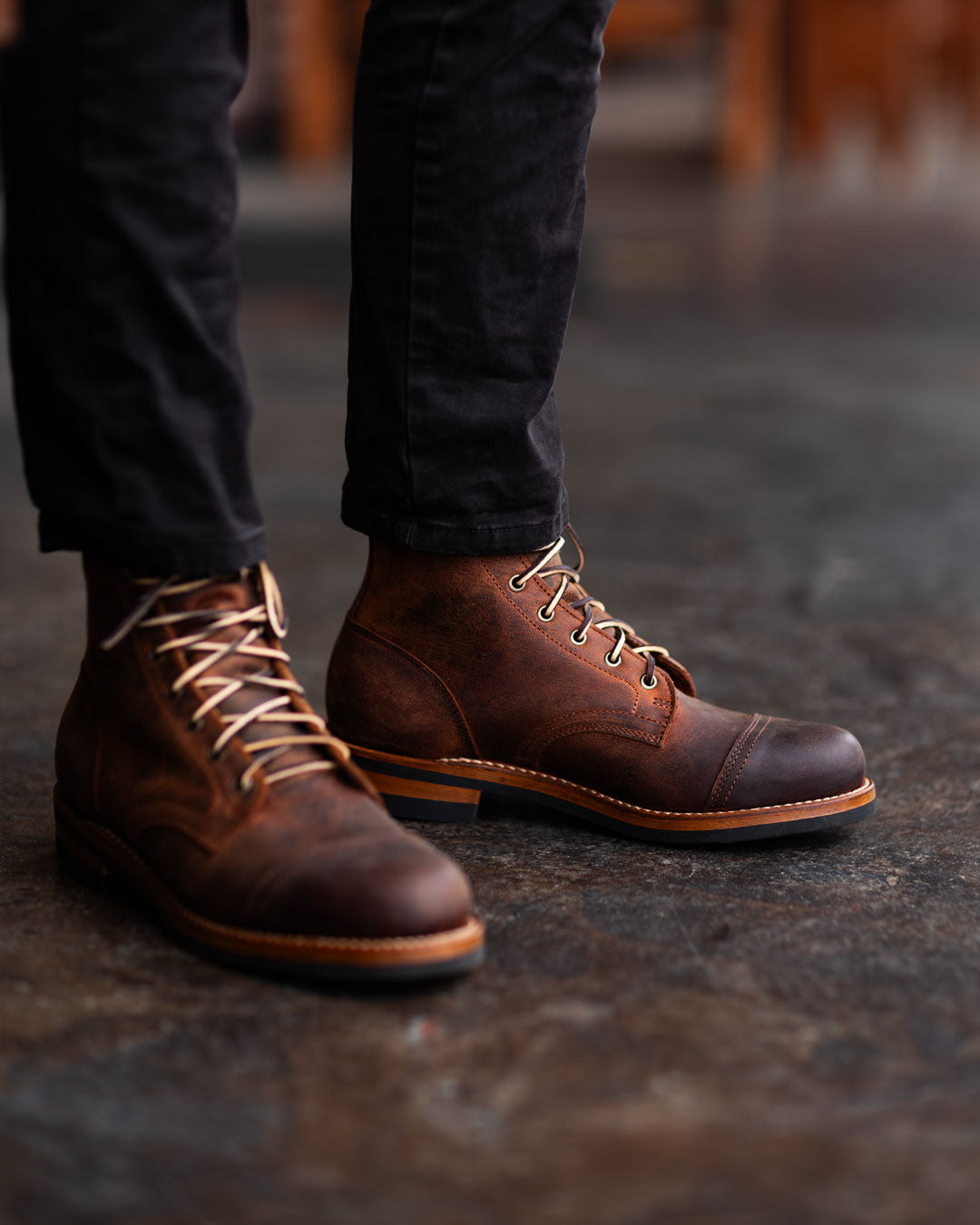
Basic Details
Leather Name: Cognac Teton Stag
Maintenance: Occasional application of Truman Boot Protector or Truman Boot Cream
Tannery: Gallun Leathers
Tannage: A non-heavy metal tannage that gives greater structure to the notoriously soft deer hides
Weather Resistance: Moderate weather resistance, bolstered by application of Boot Protector
Availability: Periodic Release
Truman Why: We're excited to offer up Gallun's latest innovation, a full-bodied deerskin, rich with pull-up and an unparalleled suppleness
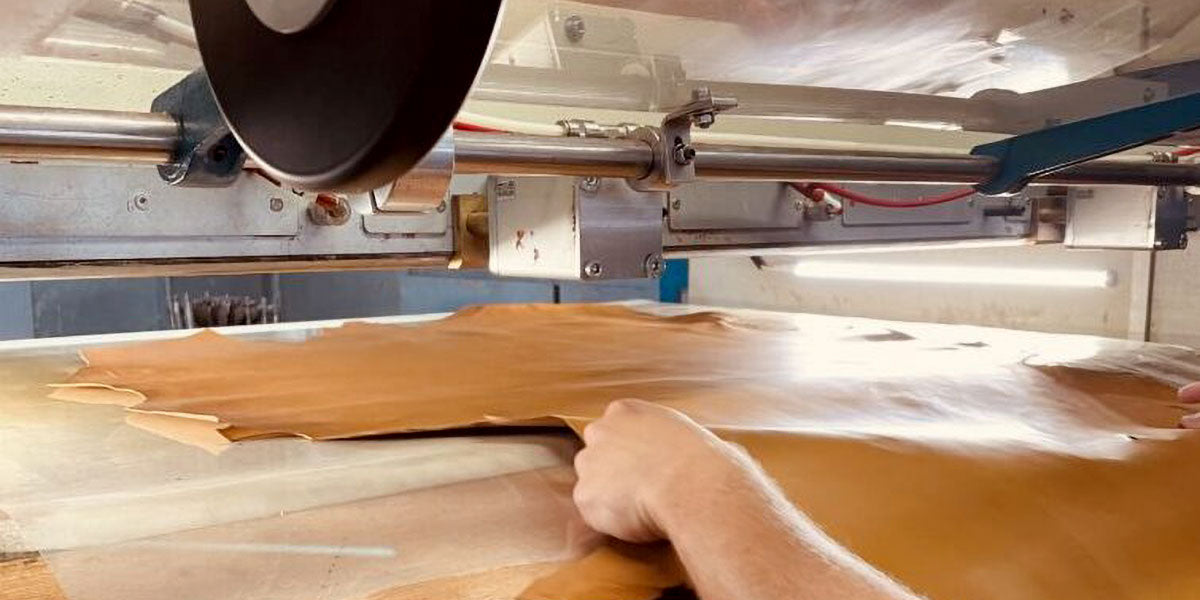
About the Tannery
Gallun Leathers
Gallun Leathers, founded in 1858 in Milwaukee, Wisconsin, is a historic tannery known for its high-quality leather products and traditional craftsmanship. The company serves a wide range of industries, including footwear, accessories, and upholstery, while prioritizing environmental responsibility and innovative tanning processes with unique results.
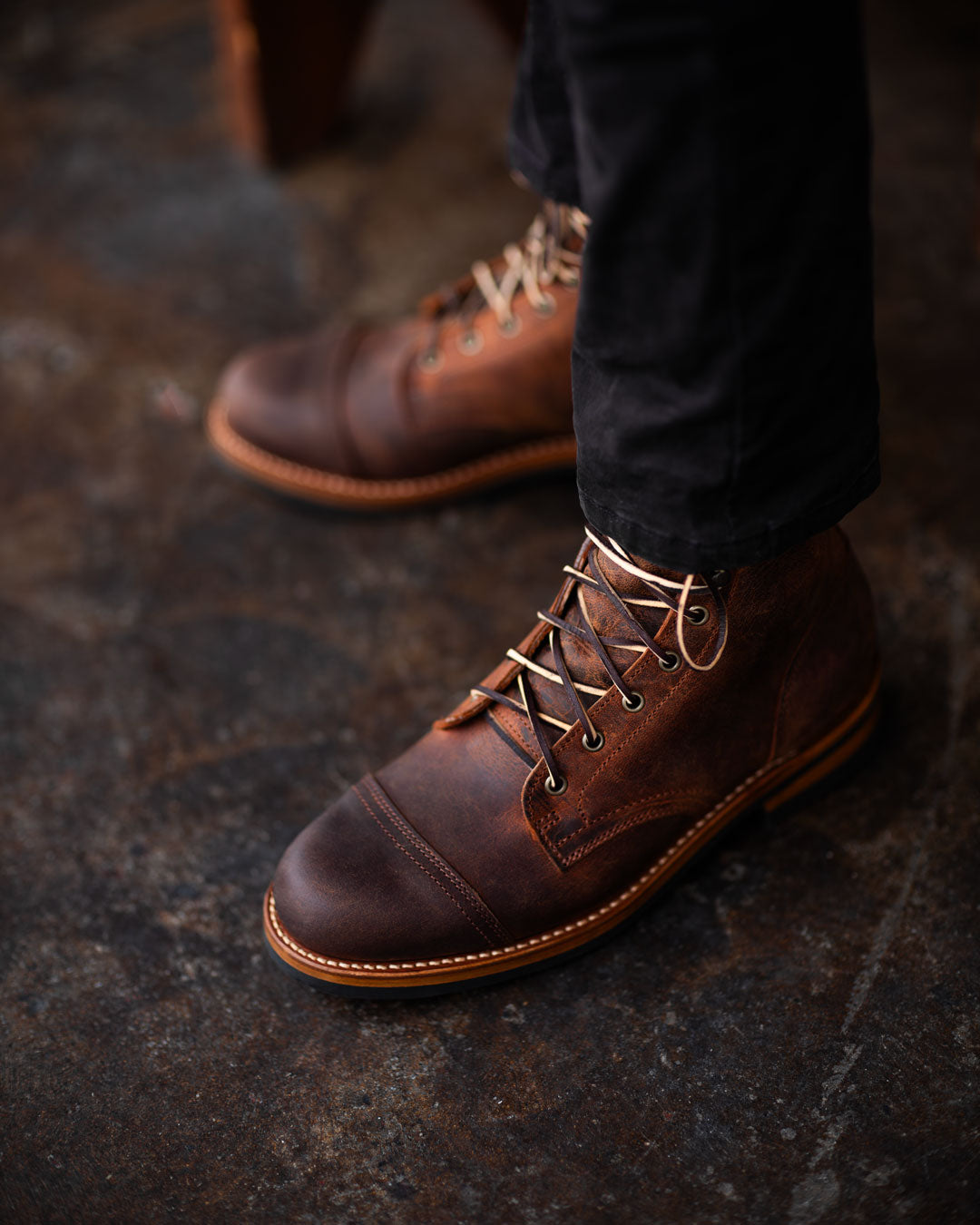
The Look
Smooth vs. Rough Out: Smooth
Glossy vs. Matte: Matte
Patina Potential: 5/10
Color: Warm brown, light to dark orange
Texture: Smooth leather
The Feel
Thickness: 4oz // ~1.6mm
Stiffness: Supple
Break-in Difficulty: Easier break-in experience, responds quickly to wear
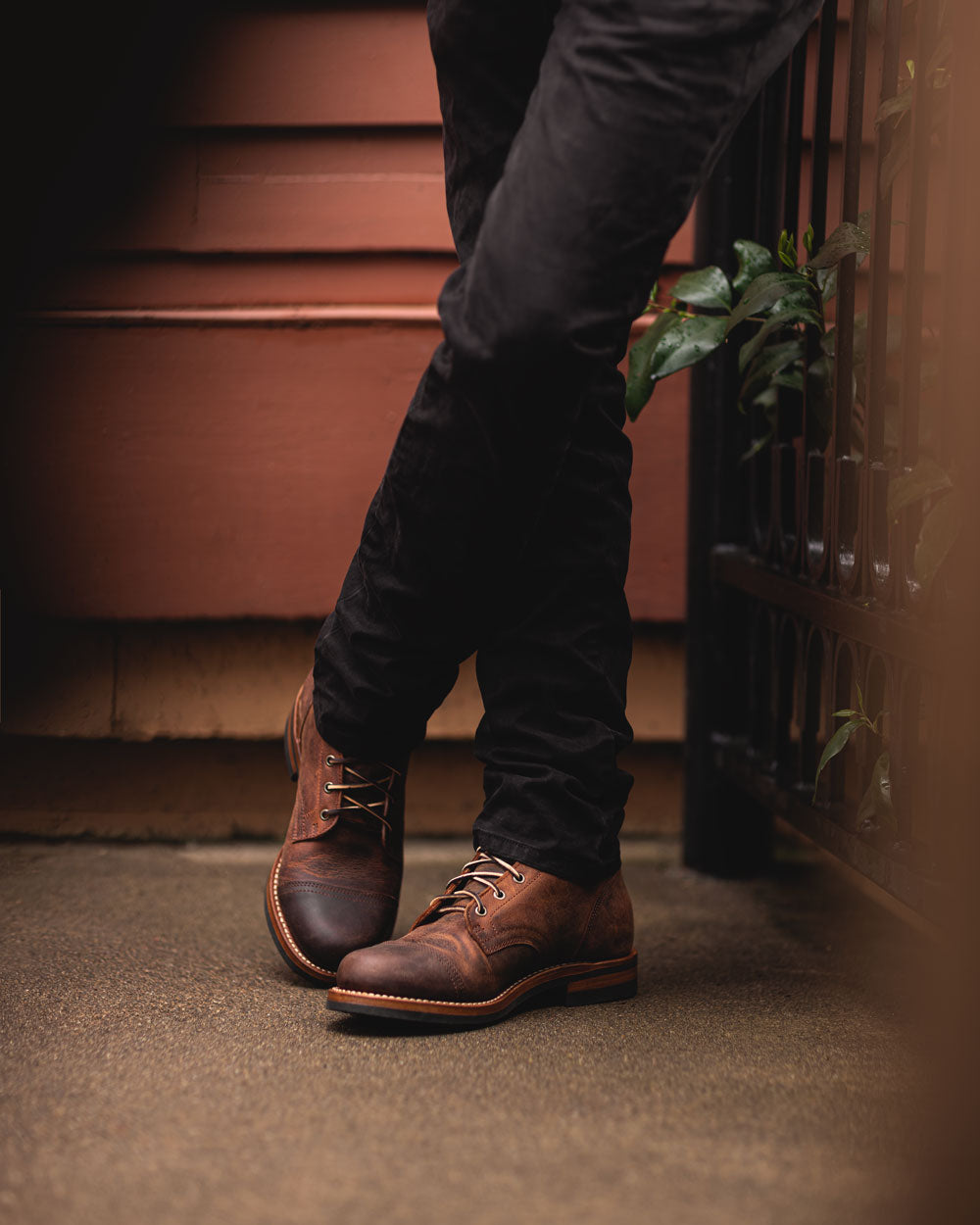
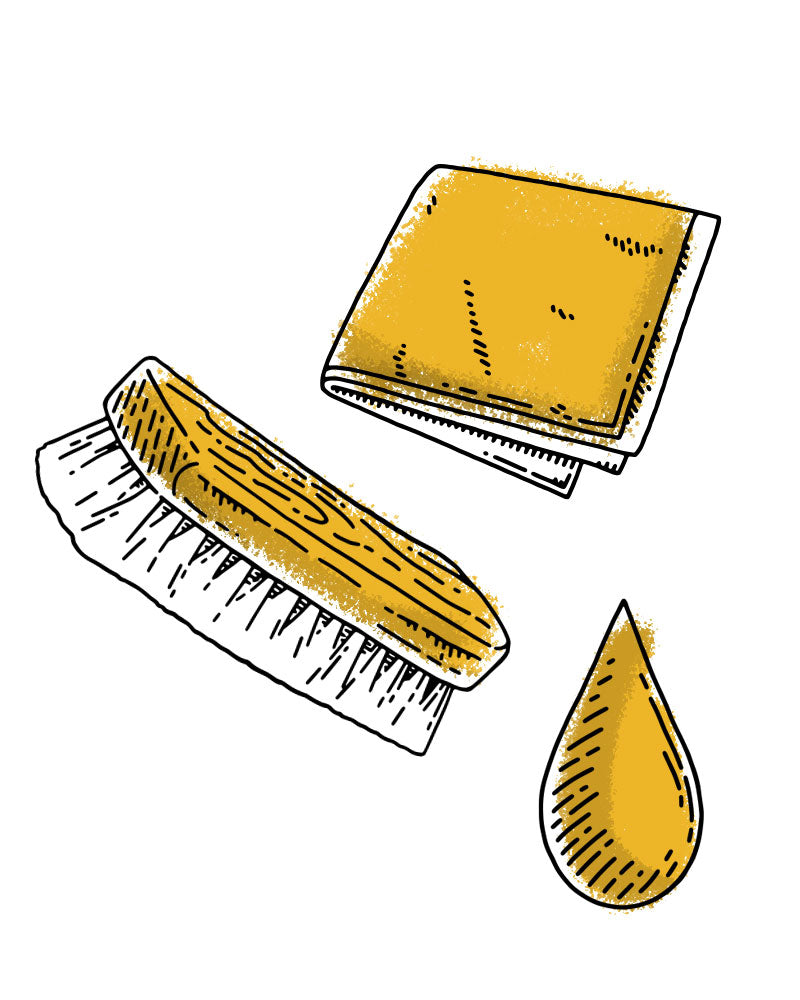
Cleaning
1. Using a horse hair brush, lightly brush to remove any debris, dust and dirt from the uppers.
2. Take a wet-but-not-dripping, clean cloth to further release any stubborn dirt, and pickup all additional buildup.
3. If there is dirt or mud thickly caked on that does not come off with just water, we recommend our Leather Boot Cleaner. This can be applied directly to the leather, followed by gentle pressure with a horsehair brush to lift persistent dirt from the leather.
4. Using a clean, dry cloth, remove any excess water and/or excess cleaner, if used.
5. Air dry only — quickly drying with heat can shrink, deform and otherwise crack the leather.
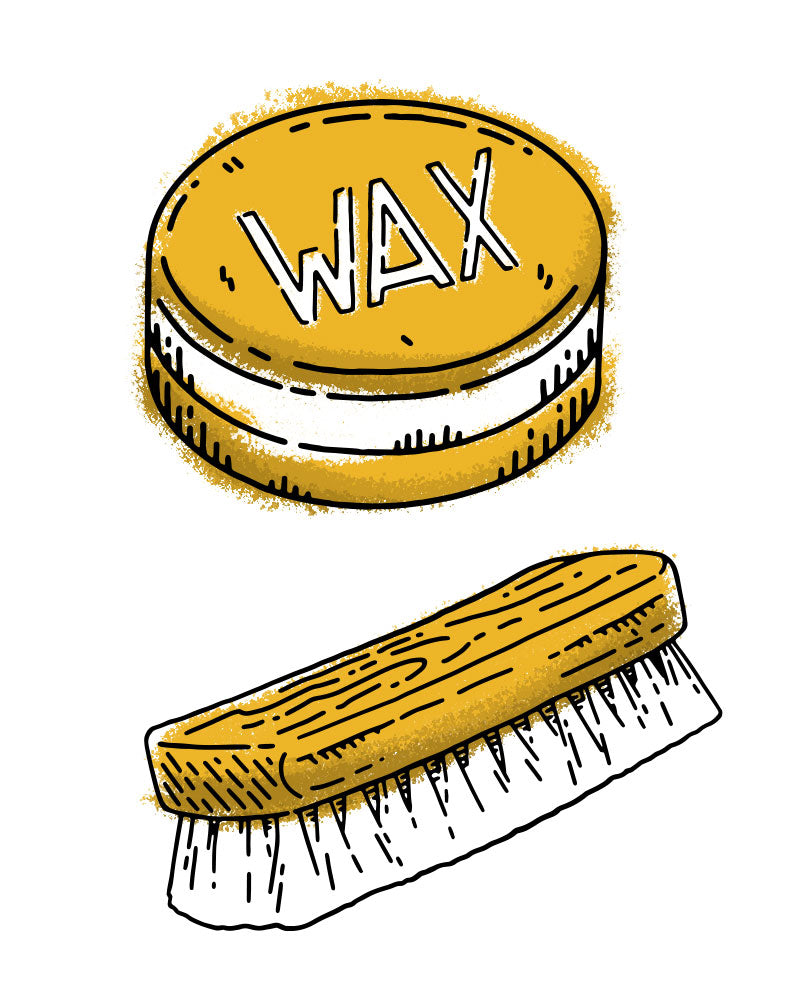
Conditioning
Just like your skin, leather becomes dry and needs to be reconditioned to retain its strength, prevent cracking and therefore prolong its lifespan. Frequency of conditioning is dependent on three things: the leather, your lifestyle and the climate in which you live.
For frequently worn boots, you may want to condition as often as five or six times a year. If your boots sit amongst a collection of boots — resulting in infrequent wear — they may not need conditioning for years.
You will want to prevent the leather from drying out with the occasional application of conditioner, such as our Leather Protector or Leather Cream.
Using a horse hair brush designated solely for conditioner, apply a small amount first to the brush, and then gently brush in the conditioner using swift, intentional movements. For water resistance, our Leather Protector is the better choice of conditioner, and should be applied to all seams in addition to the upper leather.
Signs that your boots need to be conditioned include stiffness or a feeling of dryness to the touch.
Leather should never be allowed to get so dry that visible cracking occurs on the surface.






